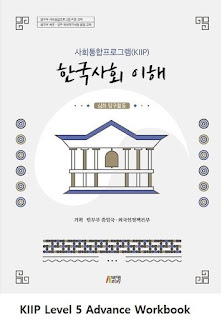V-았/었다가 grammar = but then ~after the completion of an event, the opposite event happens
Usage:
- Indicates that after the completion of an event, the opposite event happens = 'but then'
- The subject of both clauses must be the same, however the actions in both clauses are mutually contrastive or opposite.
- -았/었- does not indicate the past tense but rather the completion of the action.
- The shortened form of V-았/었다가 is V-았/었다
- V-았/었다가 often goes with 가다, 오다, 타다, and 들르다 (e.g. 갔다 오다 = pop out) to indicate unexpected/unplanned event after doing an action in a past event = V-았/었는데 grammar
- Indicates that after the completion of an event, the opposite event happens = 'but then'
- The subject of both clauses must be the same, however the actions in both clauses are mutually contrastive or opposite.
- -았/었- does not indicate the past tense but rather the completion of the action.
- The shortened form of V-았/었다가 is V-았/었다
- V-았/었다가 often goes with 가다, 오다, 타다, and 들르다 (e.g. 갔다 오다 = pop out) to indicate unexpected/unplanned event after doing an action in a past event = V-았/었는데 grammar
- V-다가 grammar = and/but then ~express interruption of one action to do another
- V-아/어다가 grammar = and then ~action is done as a result of the previous action
- A/V-다가는 grammar = if the action is continued, a negative outcome will occur
- A/V-다가는 grammar = if the action is continued, a negative outcome will occur
Verb + -았/었다가:
가다 -- 갔다가 .... 오다 (went out then came back )
열다 -- 열었다가 .... 닫다 (open then close again )
일어나다 -- 일어났다가 ... 자다 (wake up then sleep again )
끄다 -- 껐다가 .... 켜다 (turn off then turn on again )
나가다 -- 나까다가 .... 들어가다 (go out then come back )
가다 -- 갔다가 .... 오다 (went out then came back )
열다 -- 열었다가 .... 닫다 (open then close again )
일어나다 -- 일어났다가 ... 자다 (wake up then sleep again )
끄다 -- 껐다가 .... 켜다 (turn off then turn on again )
나가다 -- 나까다가 .... 들어가다 (go out then come back )
Examples:
1. 더운데 창문을 좀 열까요?
- 밖이 너무 스끄럽더라고요. 그래서 창문을 열었다가 다시 닫았어요.
It’s hot, shall I open the window?
- It was really noisy outside. So I had opened the window but then closed it again.
- It was really noisy outside. So I had opened the window but then closed it again.
2. 주말에 특별한 계획 있으세요?
- 네, 친구랑 부산에 갔다가 오려고요.
Do you have any special plan for the weekend?
- Yes, I’m planning to go to Busan (and come back) with a friend.
- Yes, I’m planning to go to Busan (and come back) with a friend.
3. 코트를 샀다가 마음에 안 들어서 환불했어요.
I bought a coat but then returned it because I didn’t like it.
4. 비행기 표를 예약했다가 갑자기 일이 생겨서 취소했어요.
I reserved an air ticket but then cancelled it because something came up suddenly.
5. 잠깐 우체국에 갔다 올게요.
I’m going to the post office (and then come back).
6. 불을 껐다가 어두워서 다시 켰어요.
I turned off the light but then turned it on because it was dark.
7. 일어났다가 졸려서 다시 잤어요.
I woke up but then slept again since I was sleepy.
8. 서점에 들렀다가/들렀는데 재미있는 책을 발견했어요.
I passed by a bookstore and came across an interesting book.
9. 대형 마트에 갔다가 우연히 고등친구를 만났어요.
I went to a supermarket and happened to bump into a high school friend.
10. 밖에 나갔다가 비가 와서 다시 들어왔어요.
I went outside but then I came back because it was raining.
Comparison between V-다가 and V-았/었다가 grammar
1. V-다가 grammar:
- The 2nd action occurs while the 1st action is still occurring
- Can be used with all verbs
2. V-았/었다가 grammar:
- The 2nd action occurs after the 1st action is completed
- Verbs pairs are contrastive in meaning
Let's enjoy the short video explaining about the expression "갔다 오다 = pop out":
- The 2nd action occurs after the 1st action is completed
- Verbs pairs are contrastive in meaning
Let's enjoy the short video explaining about the expression "갔다 오다 = pop out":
Label: Grammar Lv2






























